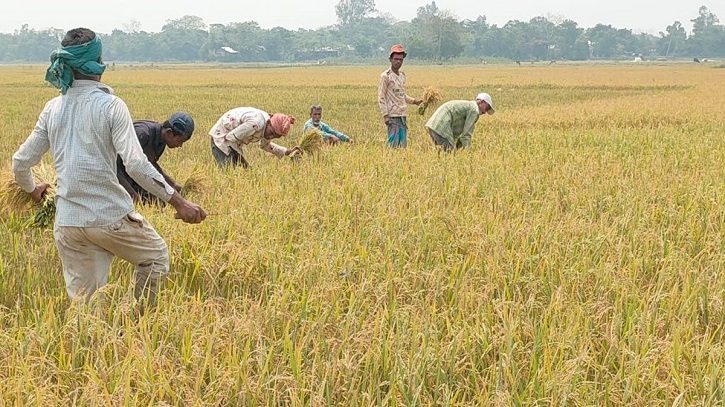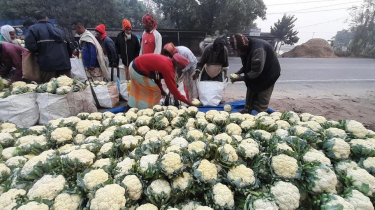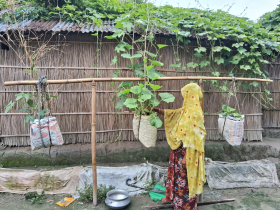
Every year, reports of bumper Aman production make headlines, but this season the achievement appears even more remarkable. For many years, marginal farmers struggled to access modern agricultural technologies due to irregularities, mismanagement, syndicate control and bureaucratic complexities. This time, the reality in Chhatak has changed. Freed from those long-standing constraints, farmers in the haor-dominated upazila of Sunamganj are experiencing unprecedented benefits from improved technologies and modern cultivation practices.
Chhatak upazila has witnessed another season of excellent Aman yields. Enhanced technology adoption, expanded training and a shift in cultivation methods have all contributed to this success. Notably, there were no external interferences hindering farmers’ access to agricultural inputs. For once, the priorities of the farmers aligned perfectly with those of the authorities. The result is a noticeable transformation in the livelihoods of growers across the region.
Regular field inspections, availability of quality pesticides and easier access to improved seeds have all helped increase yields. Across vast stretches of remote fields, farmers are now busy harvesting mature Aman paddy. As winter begins, the bumper production is expected to bring a festive atmosphere to most farming households. Authorities say the government is also working to ensure fair prices for both paddy and rice so that farmers’ efforts are duly rewarded.
According to the local agriculture office, a total of 12,950 hectares of land across 13 unions and one municipality were cultivated with Aman paddy in the 2025–26 season. The upazila’s agriculture department estimates that these fields will yield approximately 51,196 tonnes of paddy. In the previous fiscal year, 13,060 hectares produced 50,430 tonnes. Although the cultivated area appears slightly lower on paper, production has increased. Officials attribute this improvement to greater farmer awareness and adequate technological support.
In comparison, 13,050 hectares yielded 50,388 tonnes in 2023–24, while 12,950 hectares produced 49,070 tonnes in 2022–23. The 2021–22 season saw 50,430 tonnes from 13,060 hectares. While the land area has remained largely consistent over the past several years, this year’s output surpasses that of the last three to four seasons.
In recent years, the government has been providing extensive technological support to enhance crop production in the region. Previously, issues such as delays, shortages and mismanagement often hindered farmers from accessing harvesters, seeds and other machinery. This season, however, distribution has been transparent and efficient. Under various government projects, 51 combine harvesters, 26 reaper machines, 42 crusher machines, 39 sprayers and 15 garden tillers were dedicated exclusively to farmers.
Ahead of the planting season, 3,000 farmers received training across 100 batches—an initiative that proved crucial in helping growers begin the season with full preparation. Authorities have also started taking steps to ensure fair market opportunities for selling Aman paddy.
The agriculture office distributed improved seed varieties including BR-22, BRRI-49, BRRI-51, BRRI-52 and BRRI-75, along with local varieties such as Kalijira, Chinigura, Tulsimala, Guti Eri, Begunbichi and Chengarmuri. During a visit to the Madhabpur area of Kalaruka Union, farmers were seen harvesting in teams, with many threshing and cleaning their crops directly in the fields. Women were equally involved, particularly in drying the paddy. Farmer Faruk Ahmed, who cultivated Aman on 20 bighas this year, said the yield was excellent and expressed his satisfaction.
Agriculture Extension Officer Shah Alam said that before planting, 750 farmers received free improved seeds, along with five kilograms of paddy seed, 10 kilograms of DOP fertiliser and 10 kilograms of MOP fertiliser per bigha. Additionally, 250 demonstration plots were supported with 10,000 kilograms of urea and an equal amount of DOP and MOP fertiliser for the entire upazila.
Upazila Agriculture Officer Mohammad Toufiq Hossain Khan noted that weather conditions remained favourable this season, significantly contributing to the remarkable yield.





